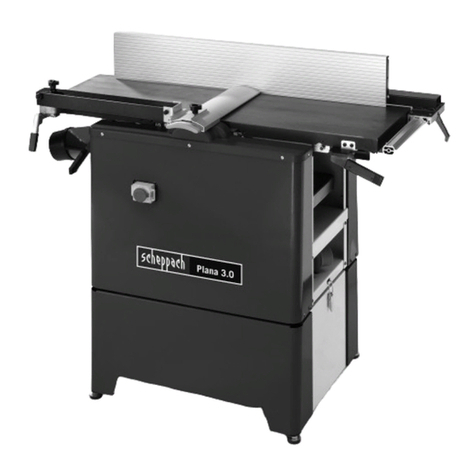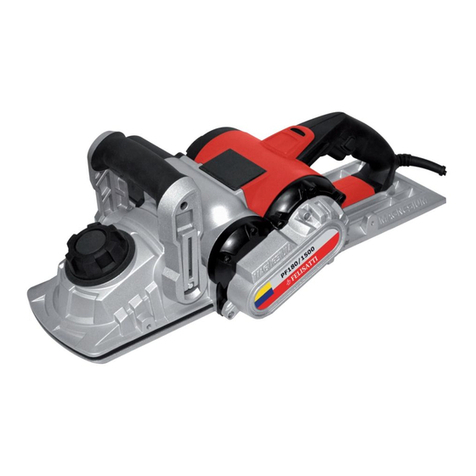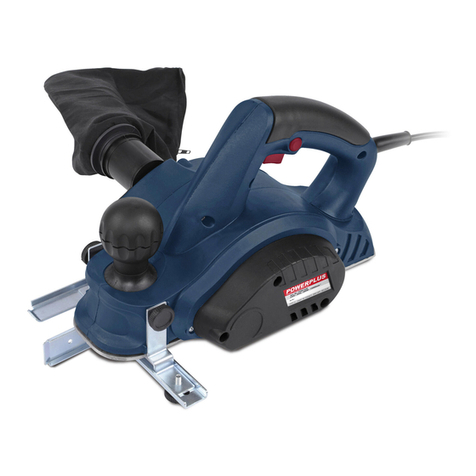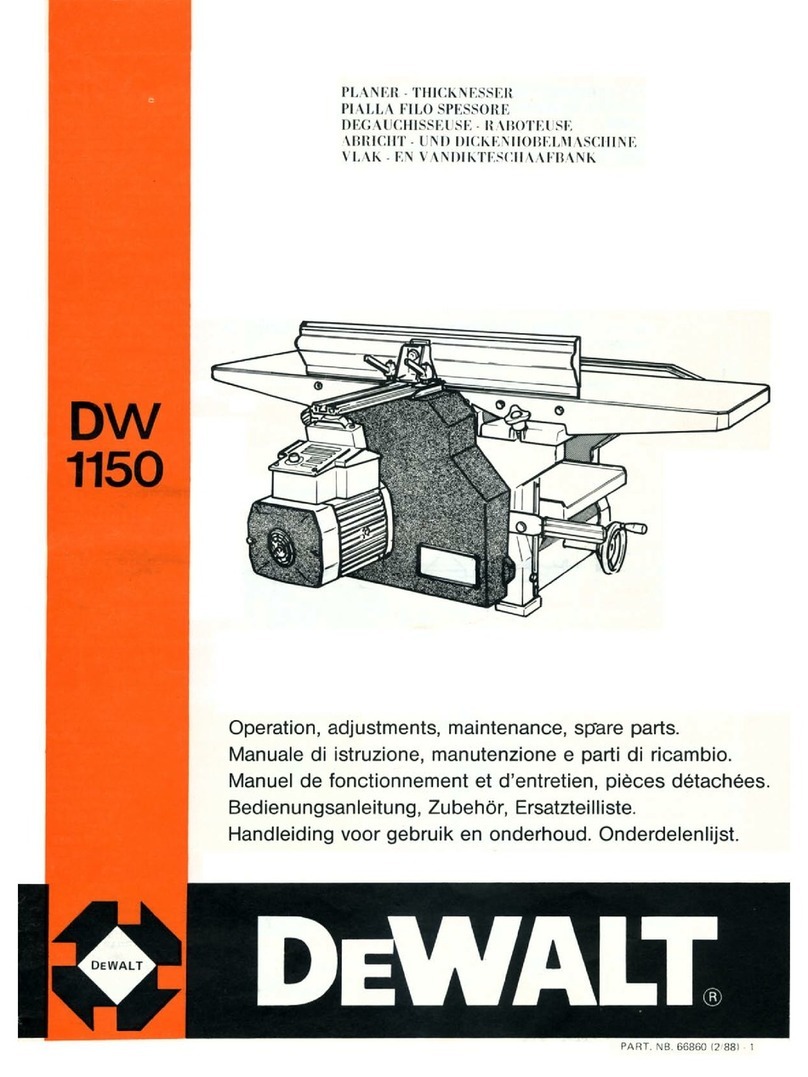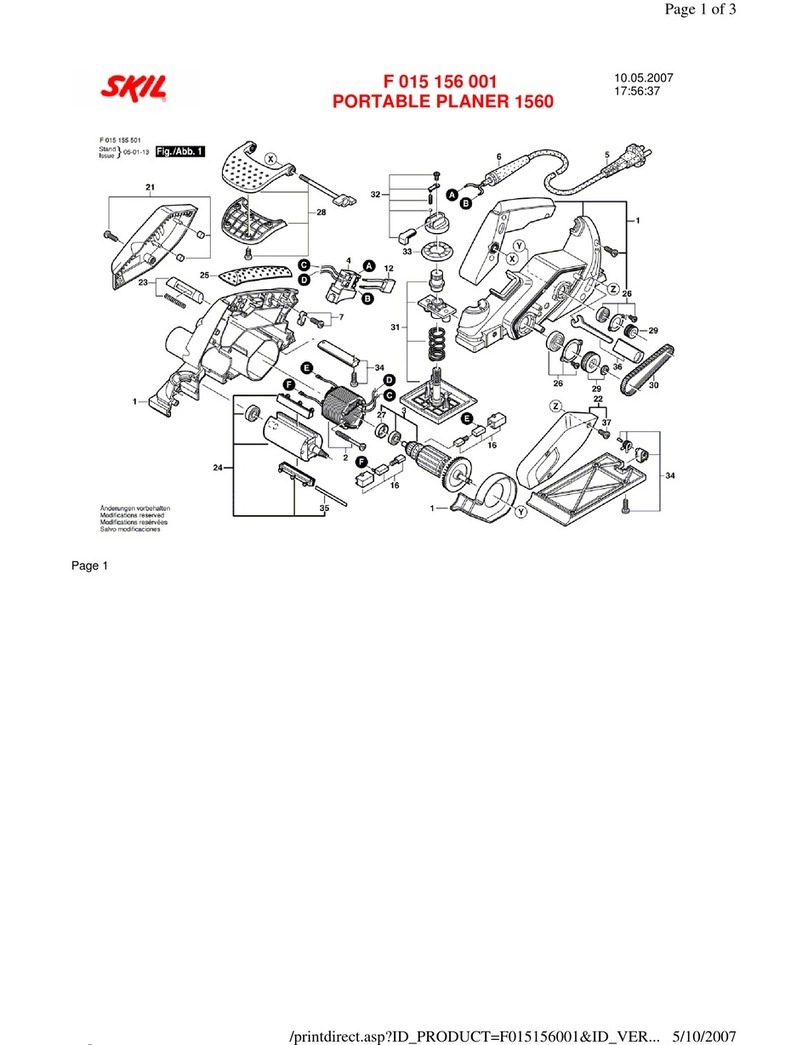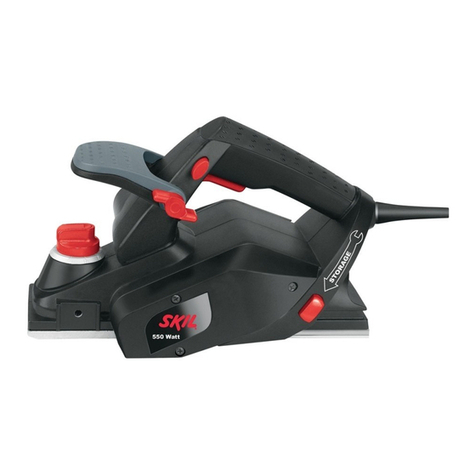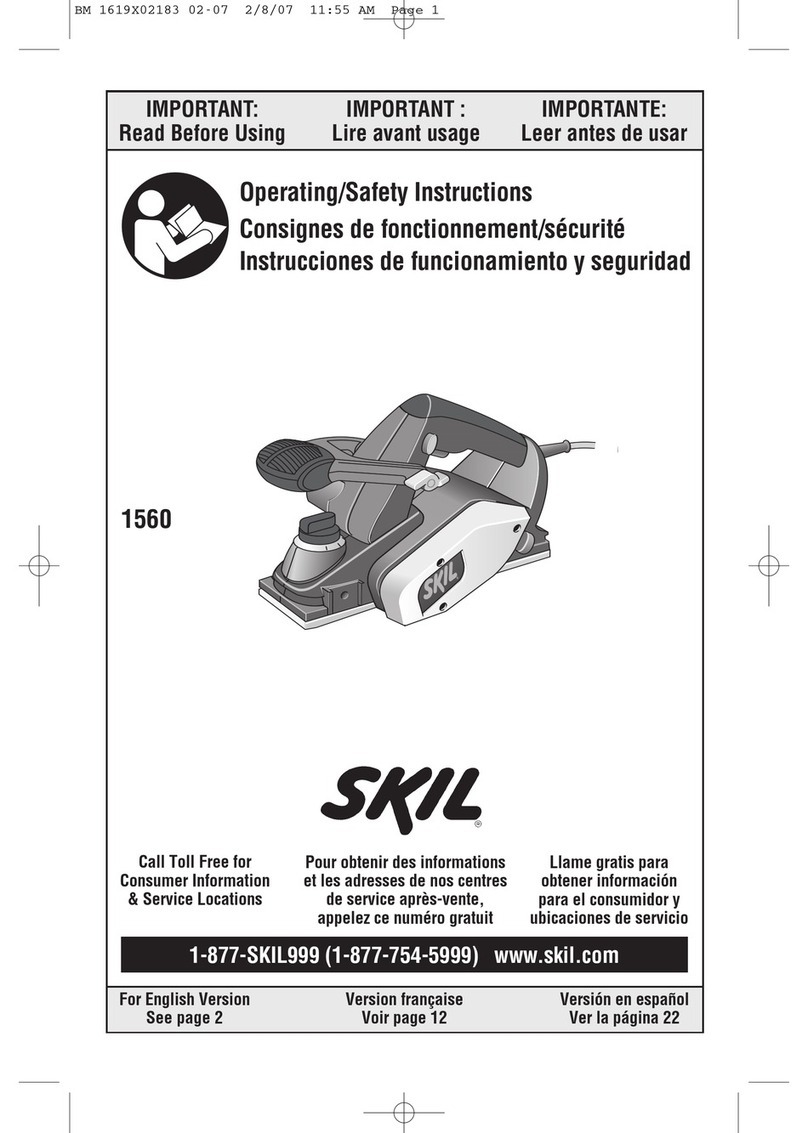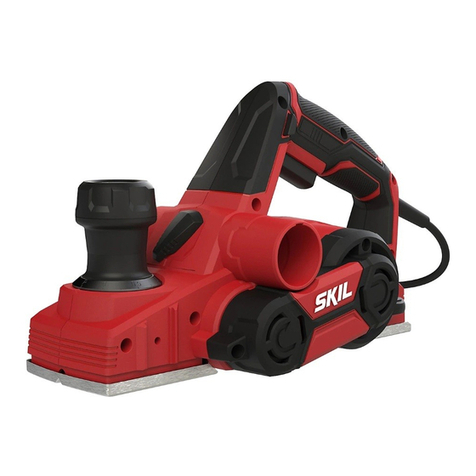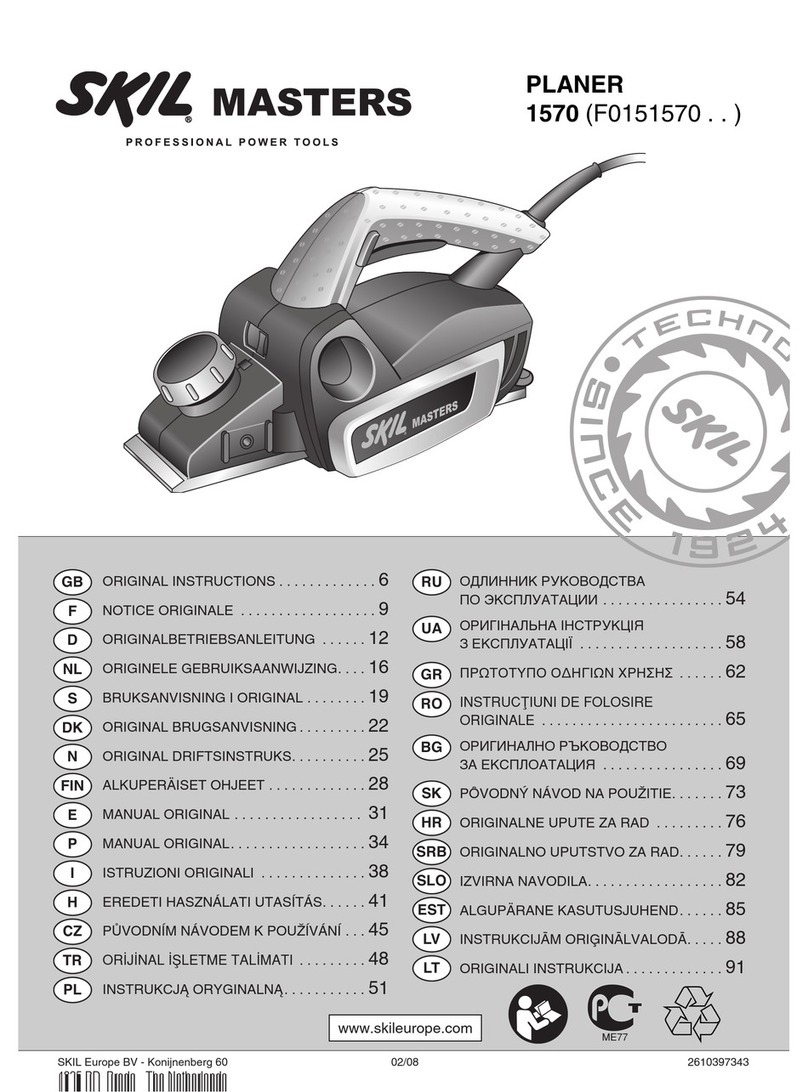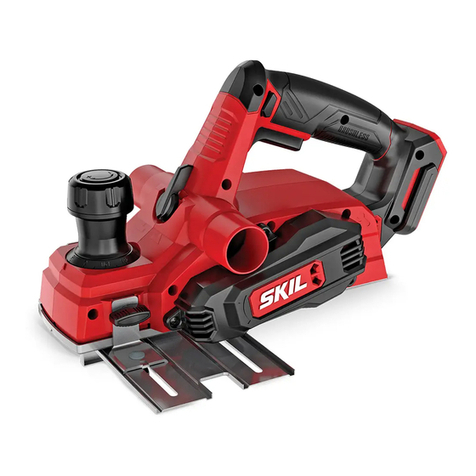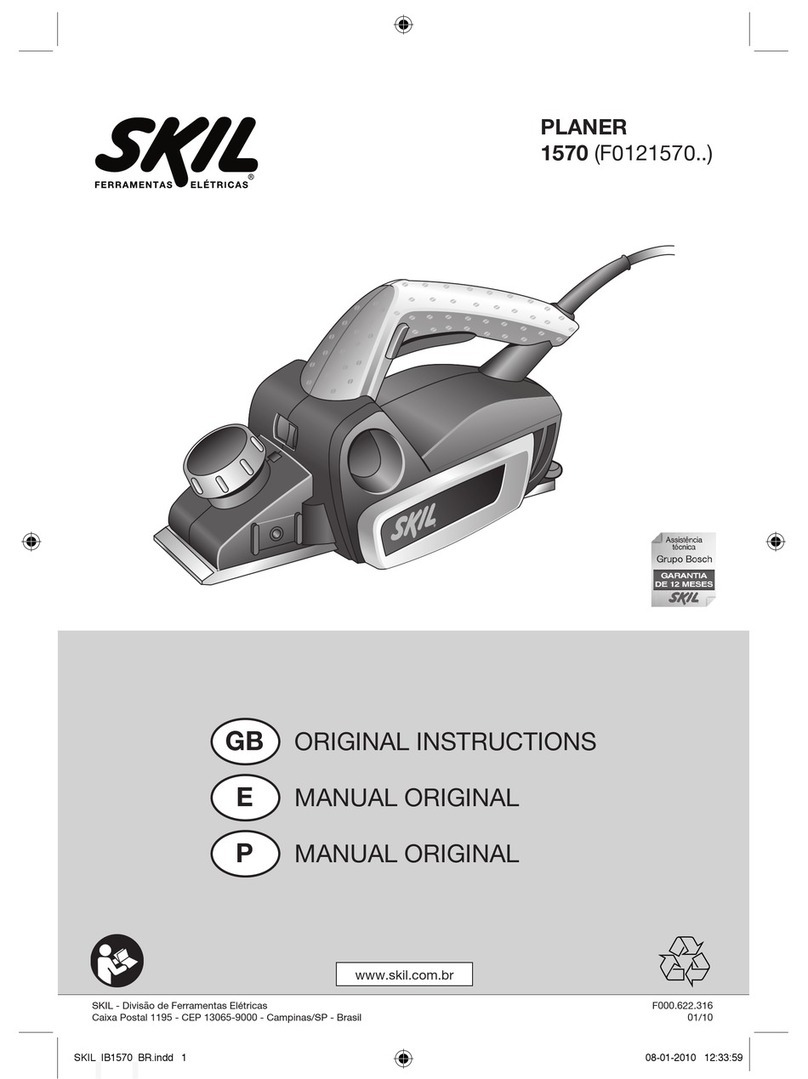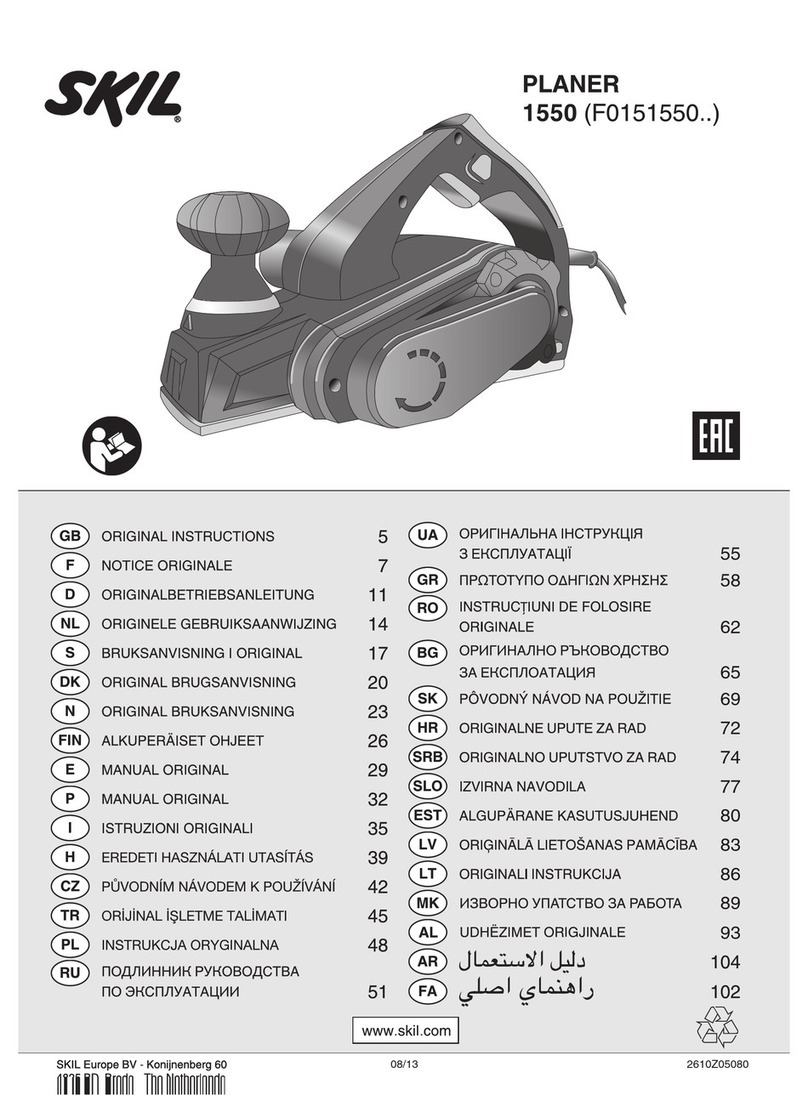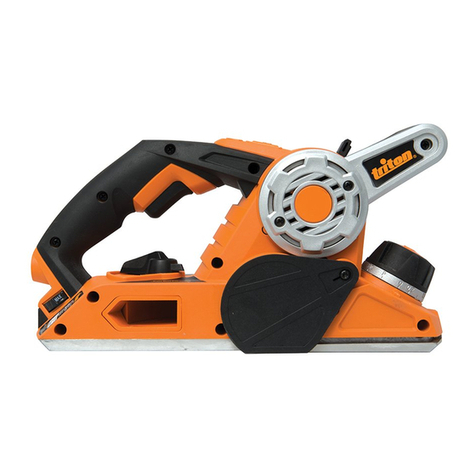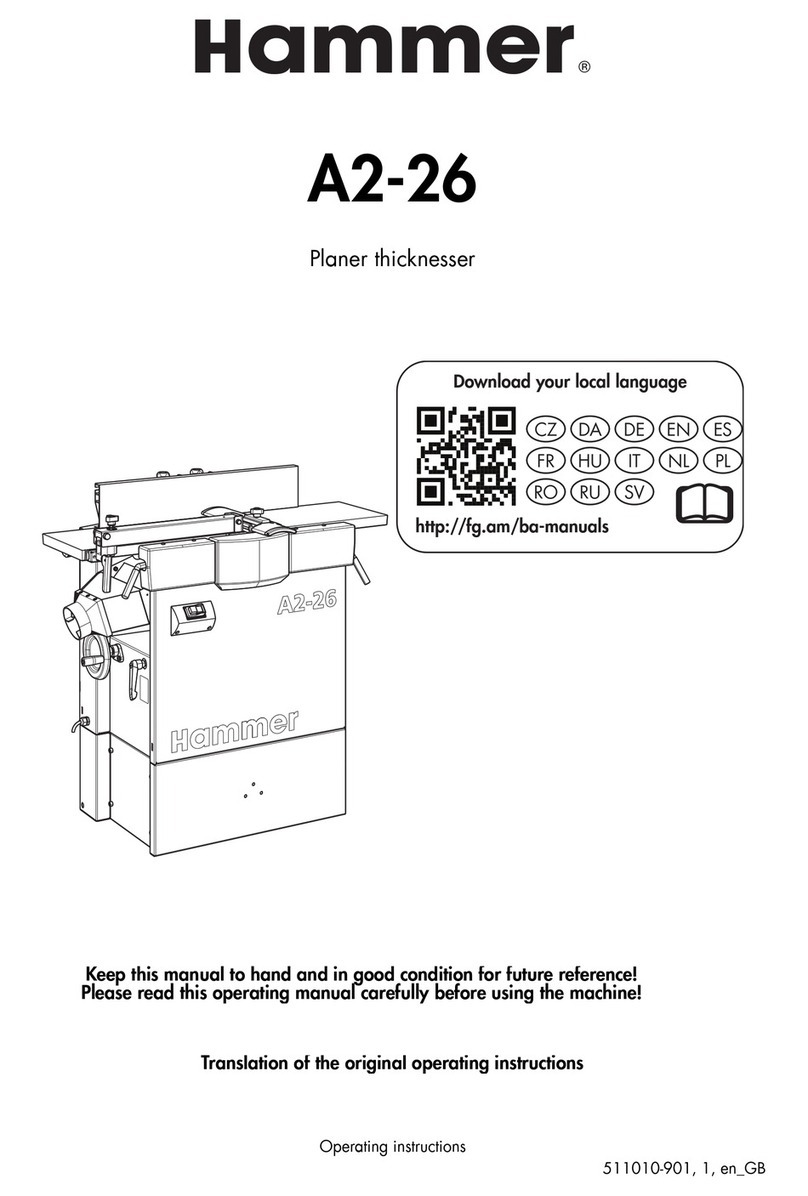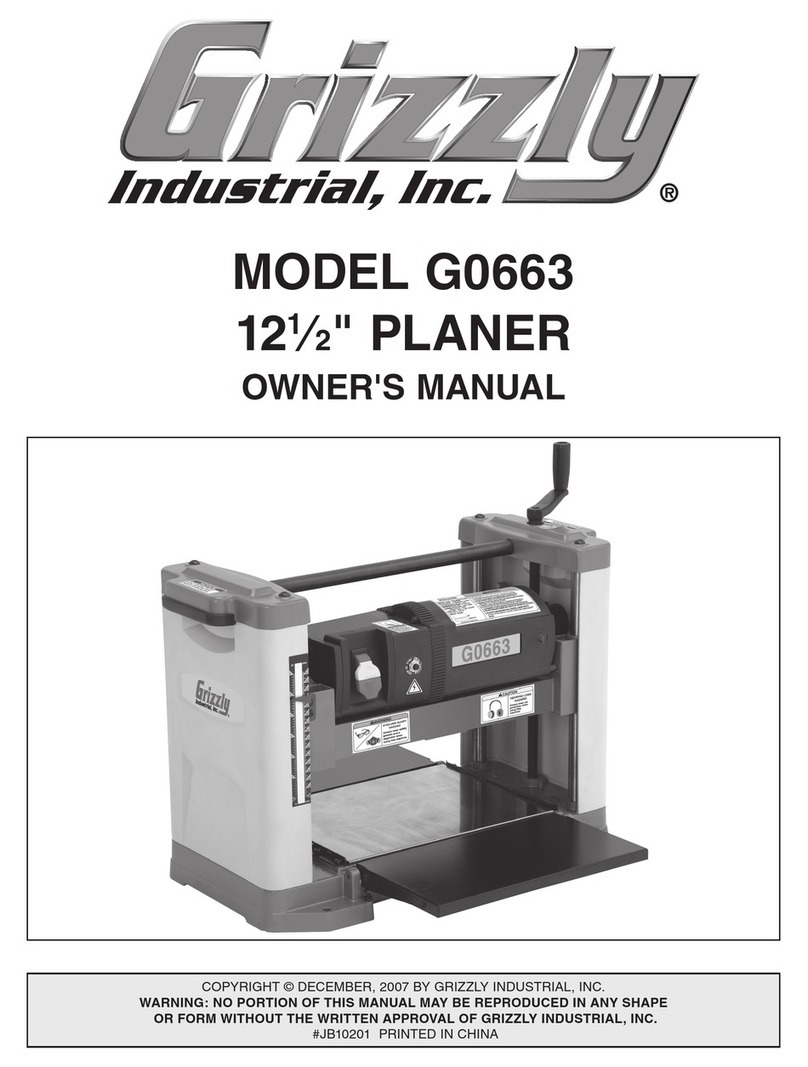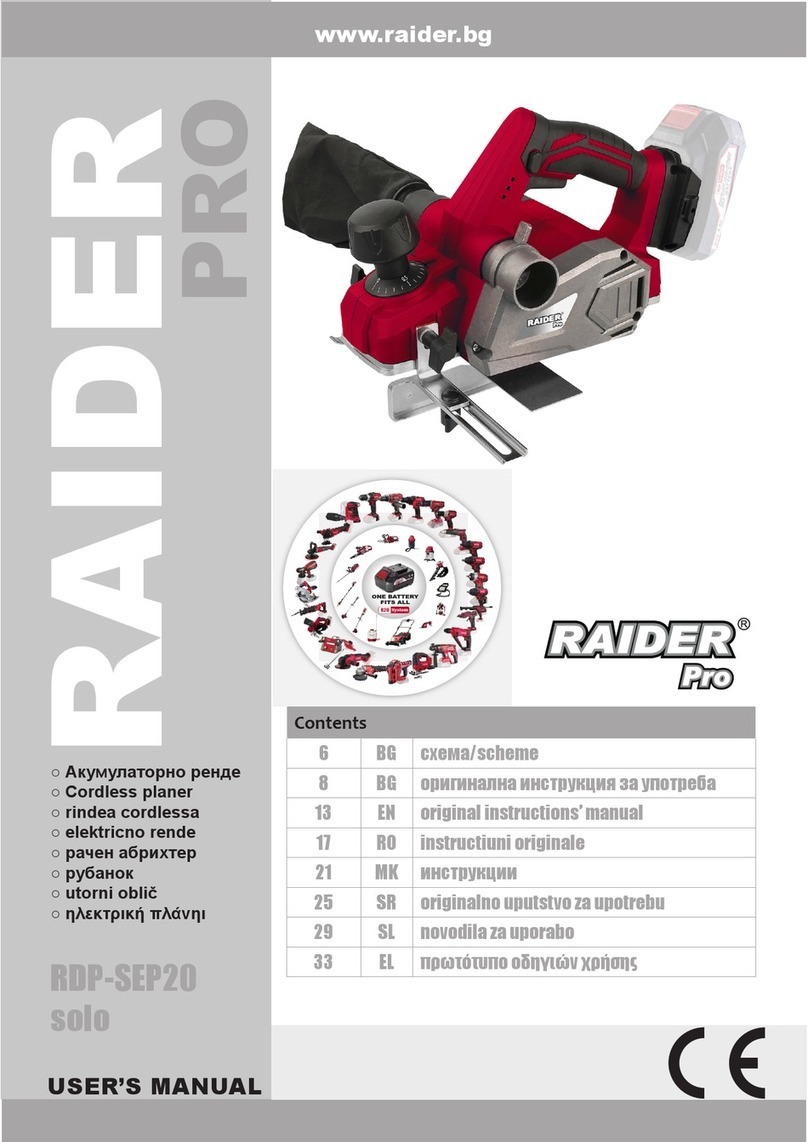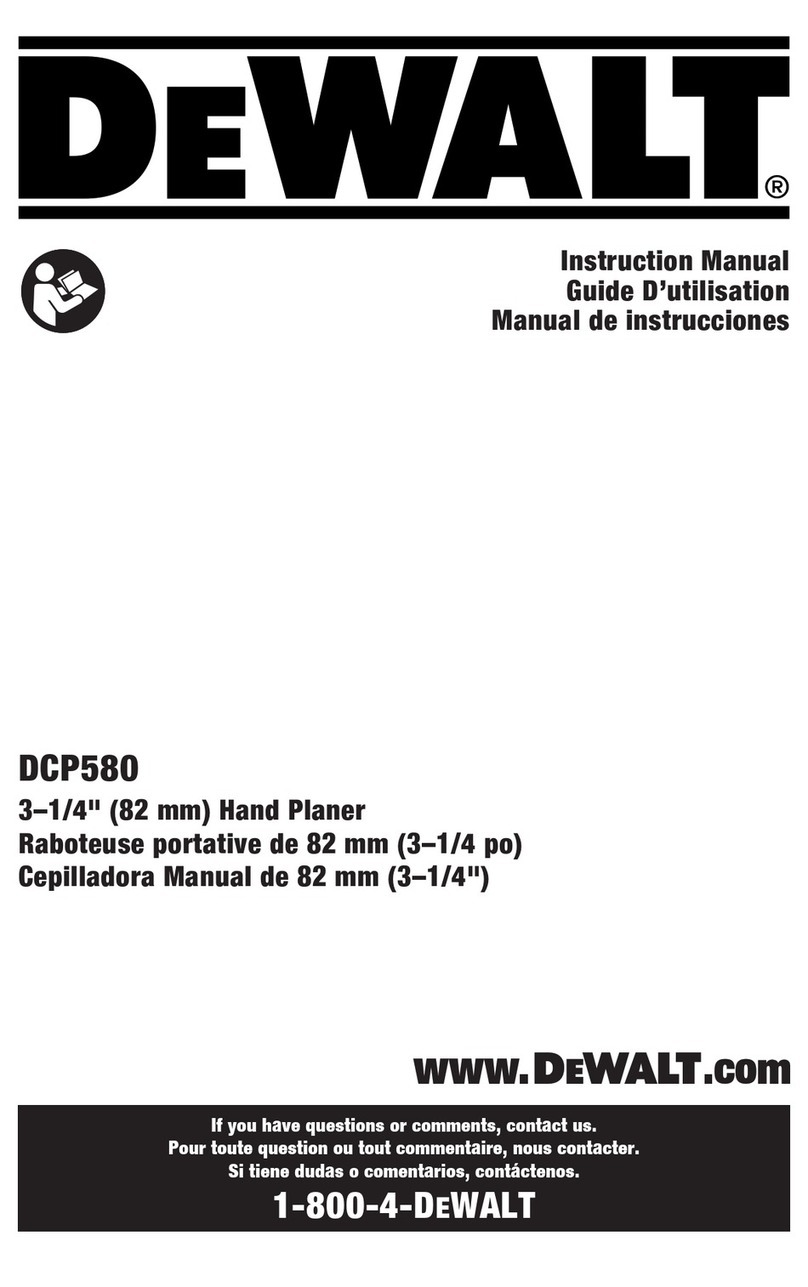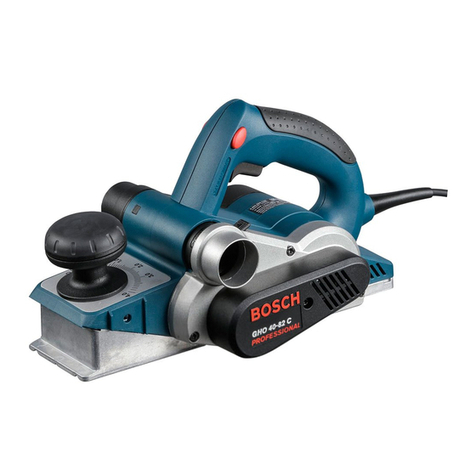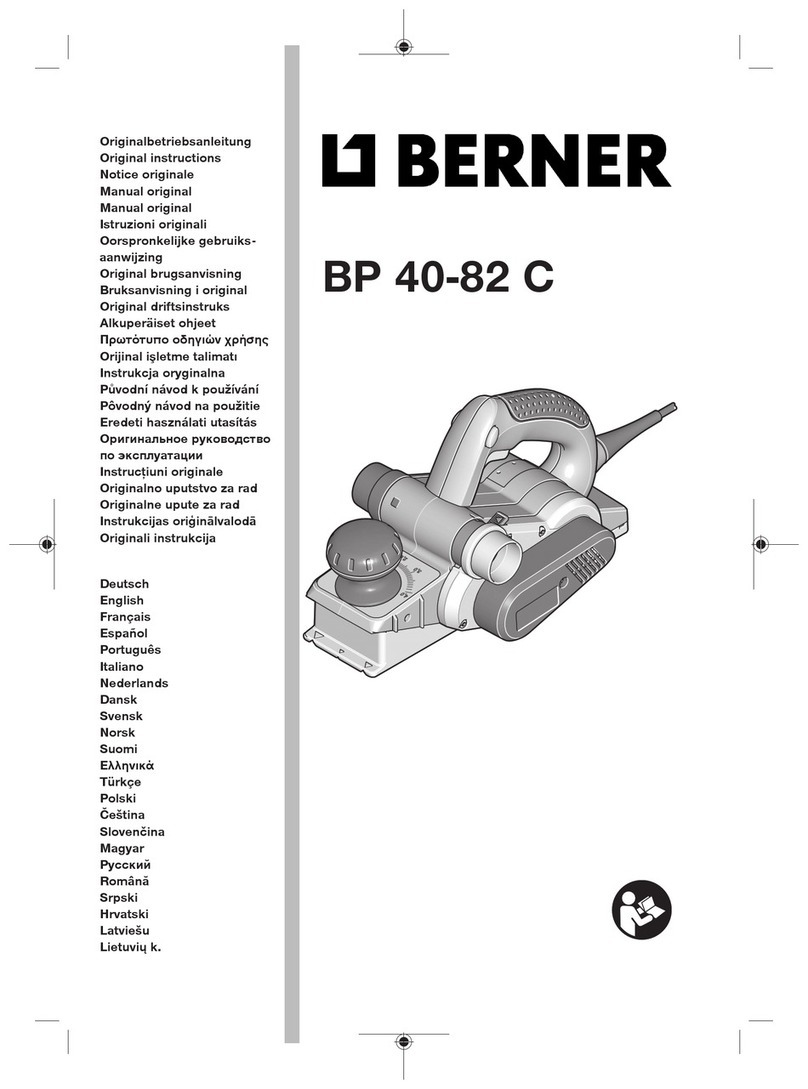
10
improperly or at temperatures outside the specied range
may damage the battery and increase the risk of re.
6) SERVICE
a)
person using only identical replacement parts. This
will ensure that the safety of the power tool is maintained.
b) Never service damaged battery packs. Service
of battery packs should only be performed by the
manufacturer or authorized service providers.
SAFETY INSTRUCTIONS FOR PLANERS
• Wait for the cutter to stop before setting the tool
down (an exposed rotating cutter may engage the
surface leading to possible loss of control and serious
injury)
• Hold the power tool by insulated gripping surfaces,
because the cutter may contact its own cord (cutting
a “live” wire may make exposed metal parts of the power
tool “live”and could give the operator an electric shock)
• Use clamps or another practical way to secure and
support the workpiece to a stable platform (holding
the workpiece by your hand or against the body leaves it
unstable and may lead to loss of control)
GENERAL
• This tool should not be used by people under the age of
16 years
• The noise level when working can exceed 85 dB(A);
wear ear protection
• Dust from material such as paint containing lead, some
wood species, minerals and metal may be harmful
(contact with or inhalation of the dust may cause allergic
reactions and/or respiratory diseases to the operator or
bystanders); wear a dust mask and work with a dust
extraction device when connectable
• Certain kinds of dust are classied as carcinogenic
(such as oak and beech dust) especially in conjunction
with additives for wood conditioning; wear a dust
mask and work with a dust extraction device when
connectable
• Follow the dust-related national requirements for the
materials you want to work with
• SKIL can assure awless functioning of the tool only
when original accessories are used
• Remove battery from tool before making any adjustments
or changing accessories
BEFORE USE
• Avoid damage that can be caused by screws, nails and
other elements in your workpiece; remove them before
you start working
• Before using the tool check that the knives do not brush
anywhere
DURING USE
• Keep your ngers away from the rotating knives
• In case of electrical or mechanical malfunction,
immediately switch o the tool and remove battery
• If any chip should get jammed in the chip outlet, you
should switch o the motor, ensure that all moving parts
have come to a complete standstill, remove battery, and
remove the jammed chip
BATTERIES
• The battery supplied is partially charged (to ensure
full capacity of the battery, completely charge the battery
in the battery charger before using your power tool for the
rst time)
do the job better and safer at the rate for which it was
designed.
b) Do not use the power tool if the switch does not turn
Any power tool that cannot be controlled
with the switch is dangerous and must be repaired.
c) Disconnect the plug from the power source and/
or remove the battery pack, if detachable, from
the power tool before making any adjustments,
changing accessories, or storing power tools. Such
preventive safety measures reduce the risk of starting the
power tool accidentally.
d) Store idle power tools out of the reach of children
and do not allow persons unfamiliar with the power
tool or these instructions to operate the power tool.
Power tools are dangerous in the hands of untrained
users.
e) Maintain power tools and accessories. Check for
misalignment or binding of moving parts, breakage
power tool’s operation. If damaged, have the power
tool repaired before use. Many accidents are caused
by poorly maintained power tools.
f) Keep cutting tools sharp and clean. Properly
maintained cutting tools with sharp cutting edges are less
likely to bind and are easier to control.
g) Use the power tool, accessories and tool bits etc.,
in accordance with these instructions, taking into
account the working conditions and the work to be
performed. Use of the power tool for operations dierent
from those intended could result in a hazardous situation.
h) Keep handles and grasping surfaces dry, clean
and free from oil and grease. Slippery handles and
grasping surfaces do not allow for safe handling and
control of the tool in unexpected situations.
5) BATTERY TOOL USE AND CARE
a)
manufacturer. A charger that is suitable for one type
of battery pack may create a risk of re when used with
another battery pack.
b)
battery packs. Use of any other battery packs may
create a risk of injury and re.
c) When battery pack is not in use, keep it away from
other metal objects like paper clips, coins, keys,
nails, screws, or other small metal objects that can
make a connection from one terminal to another.
Shorting the battery terminals together may cause burns
or a re.
d) Under abusive conditions, liquid may be ejected
from the battery; avoid contact. If contact
contacts eyes, additionally seek medical help. Liquid
ejected from the battery may cause irritation or burns.
e) Do not use a battery pack or tool that is damaged
Damaged or modied batteries may exhibit
unpredictable behaviour resulting in re, explosion or risk
of injury.
f)
excessive temperature. Exposure to re or temperature
above 130°C may cause explosion.
g) Follow all charging instructions and do not charge
the battery pack or tool outside the temperature
Charging
